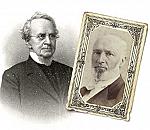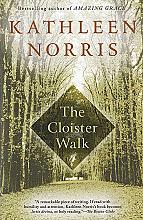Freedom for tradition
Lutherans are quintessentially Protestant. No, wait, actually Lutherans are Catholicism-lite. Martin Luther went too far and broke the church. Actually, Luther did not go far enough and retained too much.
Can you fit a round peg into a square hole? Doing so might be easier than trying to categorize the Lutheran tradition. Lutherans often exist in an ambiguous space where they are destined to please no one. But in recent decades this “not quite fitting in” has also proved fertile for renewal.
A buzzword for Luther was “freedom.” As many theologians of his time did, he changed the spelling of his name. In his case it was from Ludder to Luther—derived from the Greek word for freedom, elutheria—because freedom was at the heart of the gospel for him. However Luther’s freedom was not what would become the stereotypically Protestant freedom “from.” While Luther rejected aspects of medieval Catholicism he found to be problematic novelties—purgatory, indulgences, papal authority, transubstantiation—he also defended Catholic practices that many later Protestants would reject, such as icons, the real presence of Christ in the Eucharist, and infant baptism.
Luther advocated a freedom “for” tradition: the Christian is free to engage the substance of the faith across time and to gauge to what extent a given practice conveys the gospel in its time and place. To the extent that it does, he thought, it should be retained. Thus for modern Lutherans the road to recovery of tradition has often run straight back through Luther.
Healing old divisions
Over the last hundred years or so, this freedom for tradition has placed Lutherans in an ecumenically rich context. The assumed anti-Catholic position of a number of Lutheran settings in the United States and Europe gave way to an impulse to maximize the gifts of the broader Christian tradition. In fact the Lutheran World Federation, a global confederation of churches, worked closely with the Vatican in 2017 to “observe”—not celebrate, but observe—the 500th anniversary of the 95 Theses. This commemoration of the Reformation was a far more ecumenical and peace-seeking event than it would have been even a few decades ago.
This cooperation grew out of the 1999 Joint Declaration on the Doctrine of Justification, signed by both the Lutheran World Federation and the Catholic Church’s Pontifical Council for Promoting Christian Unity (which operates with the blessing of the Vatican). In the Declaration both Lutherans and Catholics agreed that the question of how we are justified by God and what role faith and works play in that justification is no longer a church-dividing issue, as unity exists on essentials:
The teaching of the Lutheran churches presented in this Declaration does not fall under the condemnations from the Council of Trent. The condemnations in the Lutheran Confessions do not apply to the teaching of the Roman Catholic Church presented in this Declaration.
The impact of the document is muted somewhat because Roman Catholics do not follow Lutherans in seeing justification as the core doctrine around which all other doctrines must revolve. But the agreement did set the stage for the ecumenical efforts that bore fruit in the 500th anniversary commemoration.
A Catholic Luther?
Indeed modern Luther scholars have worked in recent decades to separate the actual Luther from his popular image in both Christian and secular culture: the first modern man, bravely bucking all authority in the name of unlimited choice. The recovery of an image of Luther far closer to Catholicism than to what American Protestantism looks like today has been attempted for both scholarly and devotional reasons.
Theologians and historians such as Paul Hinlicky, Christine Helmer, David Steinmetz (see “We’re not done with virtue yet,” pp. 41–44), David Yeago, and Michael Root have all written of Luther as a troubled Catholic thinker whose expulsion from the church did not cause him to celebrate untrammeled individualism.
In his own lifetime, some of Luther’s most venomous critiques were against “enthusiasts” (most of the breakaway Protestant groups), who he found inattentive to the need for a deep understanding of church, sacraments, and tradition. Recent popes such as Benedict XVI and Francis have expressed their admiration for Luther’s zeal as well as aspects of his theology. But this zeal along with his venom toward his opponents has given Lutherans the need to mend other resulting deep rifts.
In 1994 the Evangelical Lutheran Church in America, the largest body of Lutherans in the United States, issued a formal declaration to the Jewish people repudiating and lamenting Luther’s later writings against the Jews, acknowledged as horrific by modern readers. In 2010 the Lutheran World Federation also issued a formal apology to the global Mennonite Church for Lutheran participation in persecuting Anabaptists.
Paradigms new and ancient
In this ecumenical mood, Lutherans have become particularly interested in recovering the riches of the early church; they want to see how the church fathers agree with, but also challenge, classical Lutheran theological and ecclesial structures. Lutheran scholars in Finland—in close geographic proximity to centers of Eastern Orthodoxy—have, for several decades, been rereading Luther in light of his insistence that Christ is truly present in the faith of the believer and that the believer might gradually become more and more attuned to this presence in thoughts, words, and actions.
In one striking example, in his sermon “All Become One Cake,” Luther argued that taking the Eucharist makes us one “cake” with Christ and with all the world:
I am now one cake with Christ, so that no suffering can assail me again. . . . Also with us . . . we all become one cake and we eat each other.
This is quite close to ancient notions of theosis, the gradual divinization of humanity, which is an active aspect of Eastern Orthodox thought today. The Finnish scholars have argued that theosis captures more of the traditional character of Lutheran thought than an understanding of justification that sees it simply as God declaring us righteous for Christ’s sake even though no fundamental change has taken place.
While these arguments have not been accepted by all scholars of Luther, or by all Lutherans, they certainly link Luther more broadly to the logic of salvation characteristic of the early church, where a key maxim was Athanasius’s statement in Cur Deus Homo: “For the Son of God became man so that we might become God.”
Meanwhile the Lutheran communion (like so many others) is experiencing explosive growth in the global South, even as it declines in historic centers like Europe and North America. This challenges standard Western conceptions of the natural and supernatural; in contexts such as Africa, South America, and Asia, pastors go about their work with active assumptions regarding ancestors, saints, demons, and supernatural intervention of spiritual forces into the natural order of things.
Lutheran thinkers believe that this puts global South Christians much closer to the thoroughly medieval Luther than Luther would be to many “modern” Christians today. They see this as an opportunity to return to the ancient church’s wisdom around spiritual discernment, the operations of the demonic, and Eucharistic fellowship with “the great cloud of witnesses” who are close to us on earth.
Embracing the gaps
Most likely Lutherans will always be in a kind of gap among categories. As institutional Lutheranism continues to undergo global shifts and changes, it may occupy a kind of perpetual middle space that allows it to discern and embody connections between past and future, Protestant and Catholic, East and West, and modern and postmodern. These connections may also allow it to be a kind of restlessly generative force for God’s unity. We may at least pray so. C H
By Robert Saler
[Christian History originally published this article in Christian History Issue #129 in 2019]
Robert Saler is research professor of religion and culture at Christian Theological Seminary in Indianapolis, where he also serves as associate dean, executive director of the Center for Pastoral Excellence, and director of the Lilly Endowment Clergy Renewal Programs. He is the author of Between Magisterium and Marketplace and Theologia Crucis, and an ordained Lutheran minister.Next articles
Restless and reforming
The Mercersburg Theology presented Reformed Christians with a link to the past—if they chose to use it
D. G. HartFrom Manhattan to the monastery
Kathleen Norris thought she would make her name as a poet. Instead her greatest legacy came from her spiritual memoirs.
Jennifer Woodruff Tait“We’re not done with virtue yet”
Many different approaches to recover from modern amnesia
Jennifer A. BoardmanRenewals and revivals
Recent organizations that have attempted to be forces of renewal and Christian unity while maintaining a commitment to historic orthodoxy.
Jennifer Woodruff TaitSupport us
Christian History Institute (CHI) is a non-profit Pennsylvania corporation founded in 1982. Your donations support the continuation of this ministry
Donate






